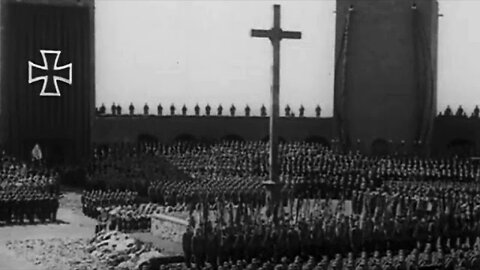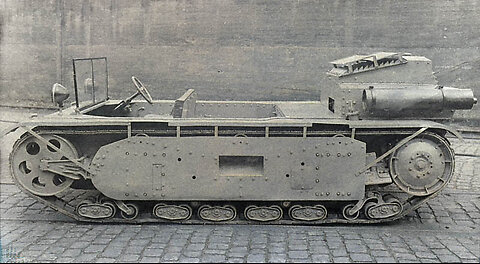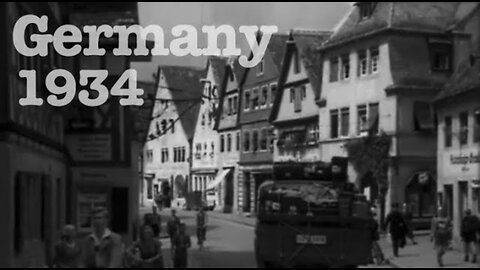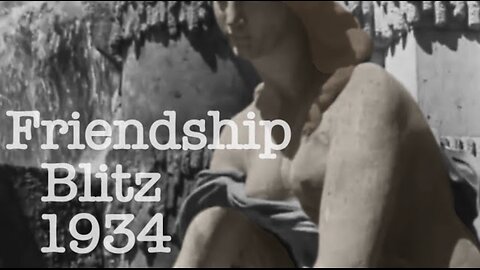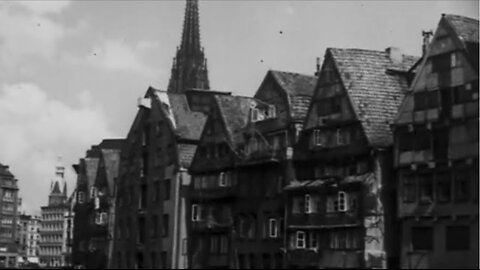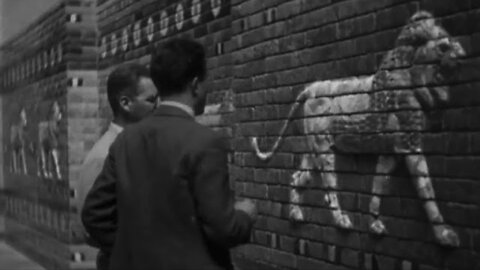
-
Culture in Nazi Germany 1934 Pt 1 Berlin, Pergamon museum, Ishtar Gate Babalyon - Prewar cooperation
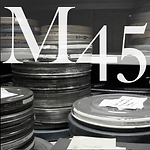 Military1945SUPPORT THE CHANNEL and get access to exclusive film footage www.Patreon.com/Military1945 Episode 132 Rare film footage is the focus of this new series that will show aspects of WW2 that go against the grain of the “Good war” narrative. In fact, It’s been suggested that some of the material should be destroyed, that I find frankly outrageous. History, like all the sciences, must be open to the addition of good data points and devoid of political correctness in order to get as complete an understanding as possible. Here in part 1 we’ll see one reel of six documenting the a cultural visit to Germany of a group of British intellectuals in 1934. In other videos from this series we’ll see footage of corporations that were willing to do business in Nazi Germany and fascist organizations that were active in the Allied nations. This material is historically important, come and see. Pergamon Museum The Pergamon Museum was severely damaged during the air attacks on Berlin at the end of the Second World War. Many of the display objects had been stored in safe places, and some of the large exhibits were walled in for protection. In 1945, the Red Army collected all of the loose museum items, either as war booty or to rescue them from looting and fires then raging in Berlin. Not until 1958 were most of the objects returned to East Germany. Significant parts of the collection remain in Russia. Some are currently stored in the Pushkin Museum in Moscow and the Hermitage Museum in Saint Petersburg. The return of these items has been arranged in a treaty between Germany and Russia but is blocked by Russian restitution laws. Among the pieces the museum displays are: The Pergamon Altar Market Gate of Miletus The Ishtar Gate and the Processional Way, Babylon The Mshatta Facade The Meissner fragment from the Epic of Gilgamesh.119 views 1 comment
Military1945SUPPORT THE CHANNEL and get access to exclusive film footage www.Patreon.com/Military1945 Episode 132 Rare film footage is the focus of this new series that will show aspects of WW2 that go against the grain of the “Good war” narrative. In fact, It’s been suggested that some of the material should be destroyed, that I find frankly outrageous. History, like all the sciences, must be open to the addition of good data points and devoid of political correctness in order to get as complete an understanding as possible. Here in part 1 we’ll see one reel of six documenting the a cultural visit to Germany of a group of British intellectuals in 1934. In other videos from this series we’ll see footage of corporations that were willing to do business in Nazi Germany and fascist organizations that were active in the Allied nations. This material is historically important, come and see. Pergamon Museum The Pergamon Museum was severely damaged during the air attacks on Berlin at the end of the Second World War. Many of the display objects had been stored in safe places, and some of the large exhibits were walled in for protection. In 1945, the Red Army collected all of the loose museum items, either as war booty or to rescue them from looting and fires then raging in Berlin. Not until 1958 were most of the objects returned to East Germany. Significant parts of the collection remain in Russia. Some are currently stored in the Pushkin Museum in Moscow and the Hermitage Museum in Saint Petersburg. The return of these items has been arranged in a treaty between Germany and Russia but is blocked by Russian restitution laws. Among the pieces the museum displays are: The Pergamon Altar Market Gate of Miletus The Ishtar Gate and the Processional Way, Babylon The Mshatta Facade The Meissner fragment from the Epic of Gilgamesh.119 views 1 comment -
Culture in Nazi Germany 1934 Reel 2 - Danzig, Marienburg & Teutonic Order, Tannenberg, Königsberg
 Military1945SUPPORT THE CHANNEL and get access to exclusive film footage www.Patreon.com/Military1945 Episode 133 This is reel 2 of 6 from a collection of over an hour of footage taken in 1934 documenting a visit to the major German cultural sites by a group of British intellectuals. In this reel the group visits these important locations . . . MARIENBURG (Malbork) The Castle of the Teutonic Order in Ordensburg Marienburg (Polish Malbork) is a 13th-century Teutonic castle and fortress located near the town of Malbork, Poland. It is the largest castle in the world measured by land area and a UNESCO World Heritage Site. It was originally constructed by the Teutonic Knights, a German Catholic religious order of crusaders, in a form of an Ordensburg fortress. The Order named it Marienburg in honour of Mary, mother of Jesus. In 1457, during the Thirteen Years’ War, it was sold by Bohemian mercenaries to King Casimir IV of Poland in lieu of indemnities and it then served as one of several Polish royal residences and the seat of Polish offices and institutions, interrupted by several years of Swedish occupation, fulfilling this function until the First Partition of Poland in 1772. From then on the castle was under German rule for over 170 years until 1945. DANZIG (Gdańsk) The city's history is complex, with periods of Polish, Prussian and German rule, and periods of autonomy as a free city-state. An important shipbuilding port and trade point since the Middle Ages, in 1361 it became a member of the Hanseatic League which defined its economic, demographic and urban landscape for several centuries. From 1918 to 1939, Gdańsk lay in the disputed Polish Corridor between Poland and Germany; its ambiguous political status created tensions that culminated in the Invasion of Poland and the first clash of the Second World War at nearby Westerplatte. KÖNIGSBERG (Kaliningrad) Königsberg was founded in 1255 on the site of the ancient Old Prussian settlement Twangste by the Teutonic Knights during the Northern Crusades, and was named in honour of King Ottokar II of Bohemia.[1] A Baltic port city, it successively became the capital of their monastic state, the Duchy of Prussia (1525–1701) and East Prussia. Königsberg remained the coronation city of the Prussian monarchy, though the capital was moved to Berlin in 1701. Between the thirteenth and the twentieth centuries, the inhabitants spoke predominantly German, but the multicultural city also had a profound influence upon the Lithuanian and Polish cultures.[2] The city was a publishing center of Lutheran literature, including the first Polish translation of the New Testament, printed in the city in 1551, the first book in Lithuanian and the first Lutheran catechism, both printed in Königsberg in 1547. A university city, home of the Albertina University (founded in 1544), Königsberg developed into an important German intellectual and cultural center, being the residence of Simon Dach, Immanuel Kant, Käthe Kollwitz, E. T. A. Hoffmann, David Hilbert, Agnes Miegel, Hannah Arendt, Michael Wieck and others. Königsberg was the easternmost large city in Germany until World War II. Between the wars it was in the exclave of East Prussia, separated from Germany by Poland. The city was heavily damaged by Allied bombing in 1944 and during the Battle of Königsberg in 1945, when it was occupied by the Soviet Union. The Potsdam Agreement of 1945 placed it provisionally under Soviet administration, and it was annexed on 9 April 1945.164 views
Military1945SUPPORT THE CHANNEL and get access to exclusive film footage www.Patreon.com/Military1945 Episode 133 This is reel 2 of 6 from a collection of over an hour of footage taken in 1934 documenting a visit to the major German cultural sites by a group of British intellectuals. In this reel the group visits these important locations . . . MARIENBURG (Malbork) The Castle of the Teutonic Order in Ordensburg Marienburg (Polish Malbork) is a 13th-century Teutonic castle and fortress located near the town of Malbork, Poland. It is the largest castle in the world measured by land area and a UNESCO World Heritage Site. It was originally constructed by the Teutonic Knights, a German Catholic religious order of crusaders, in a form of an Ordensburg fortress. The Order named it Marienburg in honour of Mary, mother of Jesus. In 1457, during the Thirteen Years’ War, it was sold by Bohemian mercenaries to King Casimir IV of Poland in lieu of indemnities and it then served as one of several Polish royal residences and the seat of Polish offices and institutions, interrupted by several years of Swedish occupation, fulfilling this function until the First Partition of Poland in 1772. From then on the castle was under German rule for over 170 years until 1945. DANZIG (Gdańsk) The city's history is complex, with periods of Polish, Prussian and German rule, and periods of autonomy as a free city-state. An important shipbuilding port and trade point since the Middle Ages, in 1361 it became a member of the Hanseatic League which defined its economic, demographic and urban landscape for several centuries. From 1918 to 1939, Gdańsk lay in the disputed Polish Corridor between Poland and Germany; its ambiguous political status created tensions that culminated in the Invasion of Poland and the first clash of the Second World War at nearby Westerplatte. KÖNIGSBERG (Kaliningrad) Königsberg was founded in 1255 on the site of the ancient Old Prussian settlement Twangste by the Teutonic Knights during the Northern Crusades, and was named in honour of King Ottokar II of Bohemia.[1] A Baltic port city, it successively became the capital of their monastic state, the Duchy of Prussia (1525–1701) and East Prussia. Königsberg remained the coronation city of the Prussian monarchy, though the capital was moved to Berlin in 1701. Between the thirteenth and the twentieth centuries, the inhabitants spoke predominantly German, but the multicultural city also had a profound influence upon the Lithuanian and Polish cultures.[2] The city was a publishing center of Lutheran literature, including the first Polish translation of the New Testament, printed in the city in 1551, the first book in Lithuanian and the first Lutheran catechism, both printed in Königsberg in 1547. A university city, home of the Albertina University (founded in 1544), Königsberg developed into an important German intellectual and cultural center, being the residence of Simon Dach, Immanuel Kant, Käthe Kollwitz, E. T. A. Hoffmann, David Hilbert, Agnes Miegel, Hannah Arendt, Michael Wieck and others. Königsberg was the easternmost large city in Germany until World War II. Between the wars it was in the exclave of East Prussia, separated from Germany by Poland. The city was heavily damaged by Allied bombing in 1944 and during the Battle of Königsberg in 1945, when it was occupied by the Soviet Union. The Potsdam Agreement of 1945 placed it provisionally under Soviet administration, and it was annexed on 9 April 1945.164 views -
1938 Panzer unit training & 1934 road trip through Germany - Munich, Saarbrucken, Heidelberg Reel 5
 Military1945SUPPORT THE CHANNEL and get access to exclusive film footage www.Patreon.com/Military1945 This 1938 footage shows a training exercise for a German tank unit. Thanks to my Patreon supporters it’s available to show. At the end of this video I’ll show the rest of the reel so stick around, it’s worth it. Monastery of the Benedictines in Ettal Munich Frauenkirche Townhall Deutsches Museum Heidelberg Castle Old Town Espira Kaiserdom-Basilika Saarbrücken Trier Puertanegras Imperial Roman Thermal Baths Mosel vinjards57 views
Military1945SUPPORT THE CHANNEL and get access to exclusive film footage www.Patreon.com/Military1945 This 1938 footage shows a training exercise for a German tank unit. Thanks to my Patreon supporters it’s available to show. At the end of this video I’ll show the rest of the reel so stick around, it’s worth it. Monastery of the Benedictines in Ettal Munich Frauenkirche Townhall Deutsches Museum Heidelberg Castle Old Town Espira Kaiserdom-Basilika Saarbrücken Trier Puertanegras Imperial Roman Thermal Baths Mosel vinjards57 views -
1934 German road trip Rothenburg, Augsburg & Fuggerei Landsberg, Ammersee, Oberammergau - Reel 4
 Military1945SUPPORT THE CHANNEL and get access to exclusive film footage www.Patreon.com/Military1945 Rothenburg ob der Tauber Augsburg & Fuggerei The Fuggerei is the world's oldest public housing complex still in use. It is a walled enclave within the city of Augsburg, Bavaria. It takes its name from the Fugger family and was founded in 1516 by Jakob Fugger the Younger as a place where the needy citizens of Augsburg could be housed. Landsberg am Lech Where Hitler was imprisoned in 1923, where he wrote Mein Kampf. Ammersee, Bavaria Oberammergau67 views 1 comment
Military1945SUPPORT THE CHANNEL and get access to exclusive film footage www.Patreon.com/Military1945 Rothenburg ob der Tauber Augsburg & Fuggerei The Fuggerei is the world's oldest public housing complex still in use. It is a walled enclave within the city of Augsburg, Bavaria. It takes its name from the Fugger family and was founded in 1516 by Jakob Fugger the Younger as a place where the needy citizens of Augsburg could be housed. Landsberg am Lech Where Hitler was imprisoned in 1923, where he wrote Mein Kampf. Ammersee, Bavaria Oberammergau67 views 1 comment -
How the Ministry of Propaganda wanted Germany to be seen in 1934, Pt 3 - Dresden, Weimar & Nuremberg
 Military1945Historical context: This films collection, which follows a 1934 tour of a group of British intellectuals, was produced by the Reichs Propaganda Ministry. As might be expected, its intention was to portray Germany in a positive manner with its new German government in close step with Germany’s cultural heritage. Episode 137 SUPPORT THE CHANNEL and get access to exclusive film footage www.Patreon.com/Military1945 Sights visited: Dresden Rulensburg (?) 12th century castle Weimar Schiller House Nietzsche Archives introduced by Nietysche’s sister Goethe House Hitler passes by on his way to Bayreuth in Northern Baveria Jena Planetarium in Jena University of Jena House of Frommann Jena Market Nuremberg Nuremberg Castle Dürer House Reichsparteitag Bratwurstgläcklein Fountains Our Lady’s Church192 views 3 comments
Military1945Historical context: This films collection, which follows a 1934 tour of a group of British intellectuals, was produced by the Reichs Propaganda Ministry. As might be expected, its intention was to portray Germany in a positive manner with its new German government in close step with Germany’s cultural heritage. Episode 137 SUPPORT THE CHANNEL and get access to exclusive film footage www.Patreon.com/Military1945 Sights visited: Dresden Rulensburg (?) 12th century castle Weimar Schiller House Nietzsche Archives introduced by Nietysche’s sister Goethe House Hitler passes by on his way to Bayreuth in Northern Baveria Jena Planetarium in Jena University of Jena House of Frommann Jena Market Nuremberg Nuremberg Castle Dürer House Reichsparteitag Bratwurstgläcklein Fountains Our Lady’s Church192 views 3 comments -
Germany 1934 Carl Schurz Society - Bonn, Cologne Cathedral, Hamburg Chilehaus and the Sprinkenhof
 Military1945Rhein Bonn Bonn university Munster of Bonn House where Beethoven was born in 1770 Cologne Cathedral Liblar the birthplace of Karl Schurz Hamburg Chilehaus Sprinkenhof Hamburg America Line The Carl Schurz Society was created in Berlin after World War I to restore friendly German-American relations. From its start in 1926, the organization "introduced American visitors to a Germany of high culture, economic prosperity, and republican stability." But with the Nazi rise to power in 1933, that mission changed. The organization was transformed into a propaganda agency meant to show the so-called "New Germany" to Americans. This 6 part film documents a month-long trip through Germany in the summer of 1934 taken by professors, students, and administrators from 26 American universities. The film shows how German authorities presented Nazism as a national campaign of cultural and economic renewal. The film was made to be a souvenir for the trip's participants as well as a recruiting tool for American students eager to have a study abroad experience. The American group was treated to receptions hosted by dignitaries, academics, and politicians. Their hosts projected a vibrant, cultured, and technologically advanced picture of Germany under National Socialism. After their return to America, many participants praised the "New Germany" in the press. But this positive account of the Third Reich was not always well received. Even before the group departed, a New York Times headline announced "Nazis to be Guides for American Group," explaining that "visitors to Soviet Russia have long been familiar with this type of tour." Despite these criticisms, the 1934 trip become the model for a series of annual, fully funded trips for between 40 and 75 American students until 1939. By 1940, the Carl Schurz Organization became the subject of an FBI investigation for funding the activities of German spies.85 views
Military1945Rhein Bonn Bonn university Munster of Bonn House where Beethoven was born in 1770 Cologne Cathedral Liblar the birthplace of Karl Schurz Hamburg Chilehaus Sprinkenhof Hamburg America Line The Carl Schurz Society was created in Berlin after World War I to restore friendly German-American relations. From its start in 1926, the organization "introduced American visitors to a Germany of high culture, economic prosperity, and republican stability." But with the Nazi rise to power in 1933, that mission changed. The organization was transformed into a propaganda agency meant to show the so-called "New Germany" to Americans. This 6 part film documents a month-long trip through Germany in the summer of 1934 taken by professors, students, and administrators from 26 American universities. The film shows how German authorities presented Nazism as a national campaign of cultural and economic renewal. The film was made to be a souvenir for the trip's participants as well as a recruiting tool for American students eager to have a study abroad experience. The American group was treated to receptions hosted by dignitaries, academics, and politicians. Their hosts projected a vibrant, cultured, and technologically advanced picture of Germany under National Socialism. After their return to America, many participants praised the "New Germany" in the press. But this positive account of the Third Reich was not always well received. Even before the group departed, a New York Times headline announced "Nazis to be Guides for American Group," explaining that "visitors to Soviet Russia have long been familiar with this type of tour." Despite these criticisms, the 1934 trip become the model for a series of annual, fully funded trips for between 40 and 75 American students until 1939. By 1940, the Carl Schurz Organization became the subject of an FBI investigation for funding the activities of German spies.85 views
